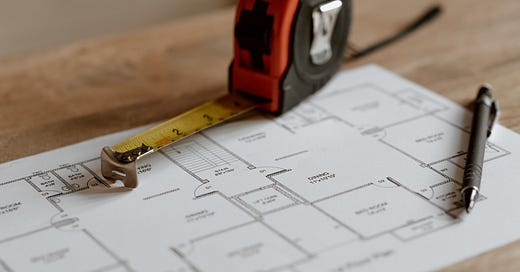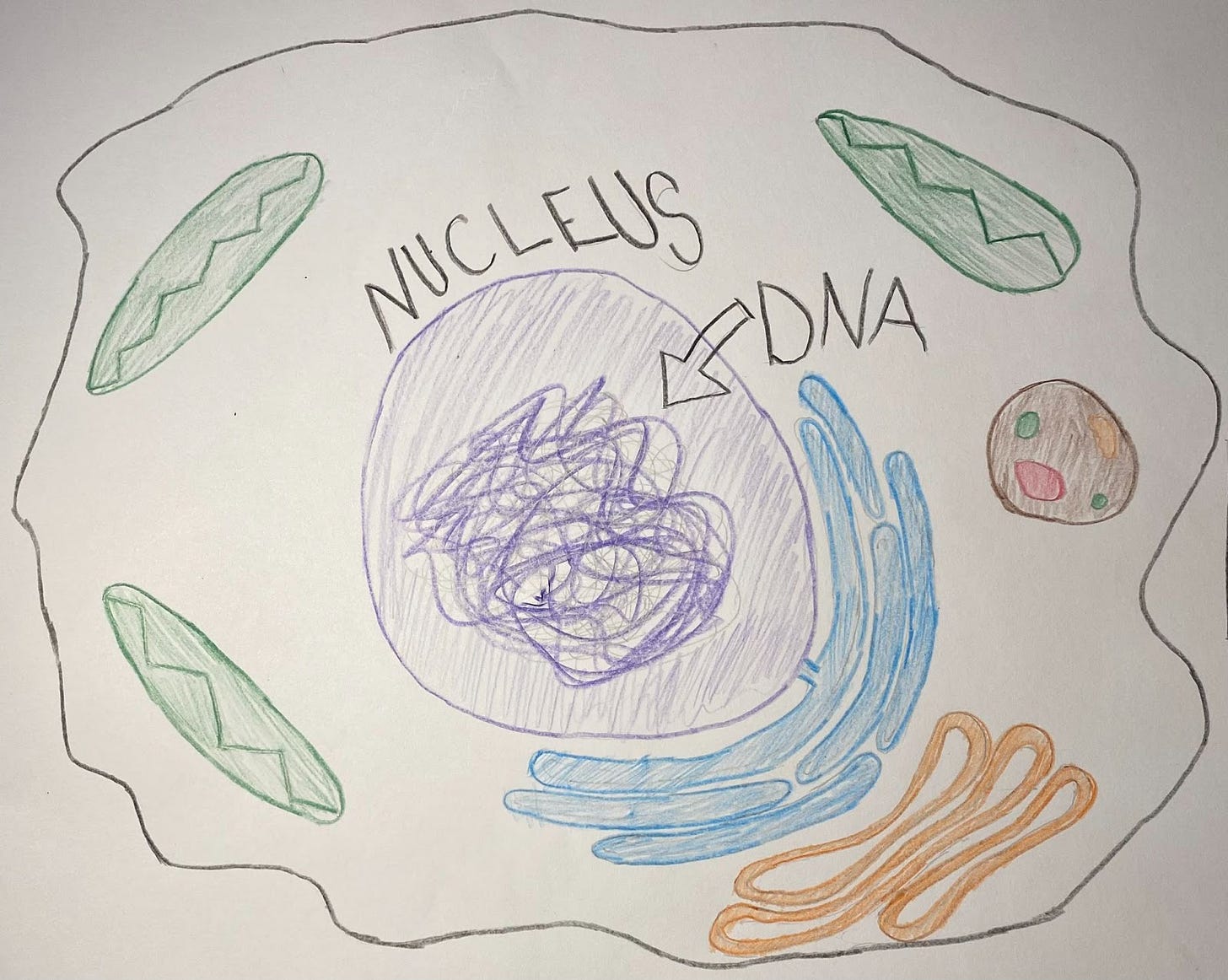Muscle Mania Part II: Hardhat Hypertrophy
Understanding Muscle Protein Synthesis and Breakdown.
Last time in the Muscle Mania Series, we covered Myology 101, discussing the structural system that composes a muscle as well as the Sliding Filament Theory that explains muscular motion. Ultimately, we came to the conclusion that if muscular hypertrophy – building muscle – is our goal, then constructing and incorporating new sarcomeres within our muscle tissue is our focus. Here, we will discuss how that construction takes place, but first, check out the recap below for a refresher of myology 101.
Recap
Muscles are ultimately composed of contractile proteins, called myofilaments, which are organized into structural units, called sarcomeres.

During a muscular contraction, myosin filament heads bind to and pull on surrounding actin filaments, sliding the filaments past each other – similar to how a person (the myosin filament) uses their arms (the myosin heads) as levers to pull on and slide across the ground (the actin filaments) during a low crawl. This motion moves the ends of the sarcomere towards the sarcomere’s center, which shortens the entire structure.
Muscular hypertrophy, or muscular growth, involves building and incorporating myofilaments into new sarcomeres to grow the overlying muscle.
Construction
Hypertrophy can be explained as the net result of muscle protein synthesis (MPS) and muscle protein breakdown (MPB), which Jorn Trommelen – PhD in muscle metabolism – describes through the analogy of building a brick wall. Below, I will add to this analogy, describing muscle hypertrophy through the concept of making improvements and additions to a whole house, where the house represents a muscle fiber.
If you are interested in a deeper dive into the nuances of muscle protein synthesis and related research techniques, check out Trommelen’s The Ultimate Guide to Muscle Protein Synthesis.
In this case, adding new bricks, planks, and shingles – analogous to MPS – is the central mechanism for making the house thicker or taller, and removing and replacing old, decrepit, or damaged portions of the house – analogous to MPB – serves a supporting role. Although it appears as a simple game of inputs and outputs, hypertrophy is complicated by the fact that – though it may seem counterintuitive – breaking down muscle is actually pivotal to building muscle. (I, II, III, IV) This concept is evidenced by studies showing that inhibiting MPB in rodents leads to myopathies, or muscular dysfunction, and disrupts hypertrophy, as well as the observation that 7 out of every 8 amino acids deposited during MPS are recycled from and supplied by MPB.(I, III, IV, V) In particular, MPB fills the role of recycling damaged proteins that result from the mechanical and metabolic stresses associated with muscular activity; furthermore, autophagy and ubiquitin ligase activity can contribute to the construction project by degrading proteins that inhibit signaling pathways involved in myogenesis (another word for building muscle tissue). In these ways, MPB is similar to the first steps to making repairs and additions to a house, in that you must tear down the cracked wall before you can build an extension on the house. With that said, since MPS is far more responsive to resistance training and diet than MPB – exhibiting ~100-200% and ~30-50% changes respectively – inducing MPS is the primary concern for increasing hypertrophy.(I, VI, VII)
So, what actually happens during muscle protein synthesis? It all starts with genetics 101 where a macro-level stimulus induces a cell signal at the micro-level, which ultimately provokes the individual muscle cells to upregulate expression of muscle protein genes.
Check out this post for another look at Genetics 101
Returning to our house analogy, imagine that a master blueprint for building different structures resides in a shed next to your house. This shed is analogous to the nucleus in each one of your cells, the master blueprint is analogous to your DNA, and the structures described in the blueprint are analogous to proteins – in other words, your DNA is a master scroll containing the instructions for building all of the different proteins in your body.
When an order – analogous to a macro-level stimulus, such as lifting weights or consuming protein – comes from your construction headquarters, a messenger travels to your site – similar to a mechanical or chemical signal in or at a muscle fiber – and directs the workers of the site – similar to the receptors on and within your muscle fibers – to start building an extension to your house. At this point, word gets around, and workers head over to the shed to get the instructions for the new walls, floors, doors, and windows they will build; however, the master blueprint must stay in the shed, so the workers must make a copy of their instructions of interest and bring that copy with them to their building site. This process is similar to transcription, where enzymes make copies — called mRNA — of specific sections of your DNA and ship those copies out of the the nucleus and into the rest of the cell for ribosomes to translate and use to build specific proteins – similar to how the machines at your building site assemble structures for incorporation into the house.

In the case of a wall on the extension, you can think of the individual bricks as amino acids – the building blocks of proteins – and you can think of chunks of the wall as proteins contributing to the overall structure that is – in our situation – a sarcomere in a muscle fiber. So, protein synthesis, in general, is the process of building new proteins according to instructions residing in your DNA. During muscle protein synthesis those new proteins are myofilaments that will contribute to new sarcomeres in your myofibers, ultimately increasing the size and contractile potential of the overlying muscle. Similar to how the minuscule motion of many myosin heads accumulates into the movement of large muscles, it is the construction of many small sarcomeres that sums into visual and functional increases in muscle size.
Our bodies incorporate these new sarcomeres in one of two ways: in series or in parallel. The first method involves adding sarcomeres longitudinally from one end to the other, which is called serial hypertrophy. The second and more prevalent method is adding sarcomeres cross-sectionally, or side to side, which is known as parallel hypertrophy.

Serial hypertrophy and atrophy (the loss of muscle tissue) impact the length of the muscle fiber; whereas, parallel hypertrophy and atrophy affect the thickness of the muscle fiber. Well, you know what muscle hypertrophy is, now you need to know how to kick off construction.
References
I. Trommelen, J., Fadi, Allen, Mike, Scarano, L., Leo, Nathir, Ma, Socrates, Cothran, D., Medhi, A., Swedianto, E., Zack, Olsen, K. W., Tony, Stadler, K., Justin, Kalajian, M., Sawse, … Smith. (2022, May 30). The Ultimate Guide to Muscle Protein Synthesis. nutrition tactics. Retrieved July 28, 2022, from https://www.nutritiontactics.com/measure-muscle-protein-synthesis/
II. Schoenfeld, B. (2021). Science and development of muscle hypertrophy. Human Kinetics.
III. Bell, R. A., Al-Khalaf, M., & Megeney, L. A. (2016). The beneficial role of proteolysis in skeletal muscle growth and stress adaptation. Skeletal muscle, 6, 16. https://doi.org/10.1186/s13395-016-0086-6
IV. Masiero, E., Agatea, L., Mammucari, C., Blaauw, B., Loro, E., Komatsu, M., Metzger, D., Reggiani, C., Schiaffino, S., & Sandri, M. (2009). Autophagy is required to maintain muscle mass. Cell metabolism, 10(6), 507–515. https://doi.org/10.1016/j.cmet.2009.10.008
V. Attia, P. (2022, May 2). 205 - energy balance, nutrition, & building muscle: Layne Norton, Ph.d. (Pt.2). YouTube.
VI. Greenhaff, P. L., Karagounis, L. G., Peirce, N., Simpson, E. J., Hazell, M., Layfield, R., Wackerhage, H., Smith, K., Atherton, P., Selby, A., & Rennie, M. J. (2008). Disassociation between the effects of amino acids and insulin on signaling, ubiquitin ligases, and protein turnover in human muscle. American journal of physiology. Endocrinology and metabolism, 295(3), E595–E604. https://doi.org/10.1152/ajpendo.90411.2008
VII. Phillips, S. M., Tipton, K. D., Aarsland, A., Wolf, S. E., & Wolfe, R. R. (1997). Mixed muscle protein synthesis and breakdown after resistance exercise in humans. The American journal of physiology, 273(1 Pt 1), E99–E107. https://doi.org/10.1152/ajpendo.1997.273.1.E99




